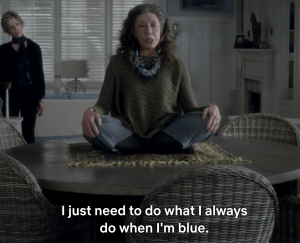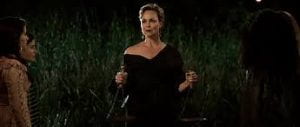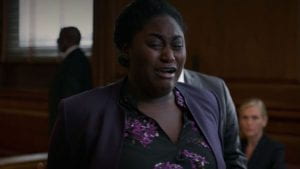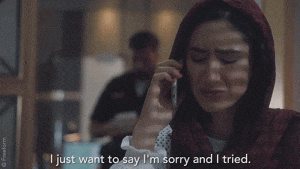
When words fail, fries and wine will do the trick! A few fries might have aided me in the writing of this very blog post…
In today’s blog post, I will be discussing the willful writing of Shonda Rhimes, in Season 1, Episode 3 of Scandal, “Hell Hath No Fury.” First, I will define “willful” so that the word has appropriate meaning within the context of this blog post. The definition of willful I will be using is, “deliberate, intentional, or done on purpose,” rather than, “a strong sense of will or stubbornness.” Throughout this post, I hope to show you that Rhimes’ writing obtains a very deliberate and intentional purpose.
For this specific episode and the entire series, Shonda Rhimes is credited with the writing. In addition to writing Scandal, Rhimes has also written other TV shows such as Grey’s Anatomy and Private Practice. Rhimes is credited with the production of other widely popular shows like How to Get Away with Murder and Station 19. She also wrote Crossroads, a film about singer, Brittney Spears. Finally, last but certainly not least, she wrote my absolute favorite movie of all time, Princess Diaries 2: The Royal Engagement!!! Needless to say, Shonda Rhimes has a very successful, and almost unrivaled, writing career, especially in the female television writer and producer arena.
Now, back to the third episode of Scandal. The dialog in the show is very cold and straight-forward. The characters speak without warm and convey no emotion. I believe Rhimes does this to authenticate Olivia Pope within the harsh, cut-throat environment of Washington and the White House. In this particular episode, Olivia deals with a horrific rape case and yet she shows almost no emotion, and she definitely does not sympathize with the victim. Thus, Rhimes keeps Olivia’s female character from showing “traditional” feminine characteristics to show Olivia can handle the good, bad, and ugly, just like her male peer professionals. Therefore, the harsh dialogue discourages personal affections and reinforces work prioity.
There is no voice-over in Scandal, and I believe that again authenticates the show and its characters. Rhimes would rather have events play out and film the reactions or have the characters voice the plot themselves than have an unknown narrator provide information. The Scandal world is full of strong lawyers and highly successful businessmen, so providing information from a separate, unlinked source would not fit into the rest of the writing in this show.
Rhimes uses silence amongst her characters as a placeholder for emotion. Many times throughout the show, and especially in this episode, Olivia remains quiet instead of demonstrating her own feelings about a situation or scenario. For example, as the rape victim gives her testimony and continuously asks Olivia rhetorical questions, Olivia remains motionless and completely silent.
For this particular episode, I did not notice any literary allusions or callbacks. However, I did notice that Rhimes’ writing aims to put each character in a light of reality and truth. She does not hide Olivia’s cold heart, Quinn’s stupidity, Huck’s anxiety, or Steven’s doubt. Instead, Rhimes almost makes the faults of her characters blatantly obvious, as to appeal to viewers’ sense of reality and relatability.























